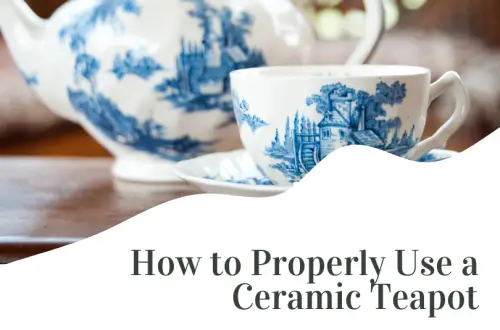From decorating the tea table to preparing the afternoon tea menu, there is plenty a host needs to do to get ready before guests arrive. Using one of four methods to brew and easily serve a larger quantity of tea will help simplify your to-do list, as well as allow you to concentrate on having fun with your guests during your party.
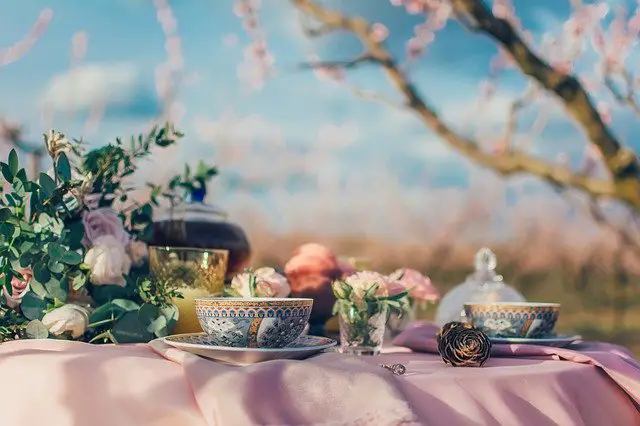
[To organize your tea party planning from set-up to shopping list, download Destination Tea’s free, printable Tea Party Planner.]
Quick Navigation
Notes on Using Tea Bags or Paper Filters
The reason we recommend choosing loose leaf teas for your afternoon tea is that they are customarily (but not always) a higher quality tea. Unbroken loose leaf tea leaves retain higher levels of essential oils, which create the most flavorful and aromatic brew. In contrast, broken tea leaves and smaller tea particles (very often used in tea bags), release more tannins into your brew, which can create an undesirable astringent taste.
While tea bags and paper filters can cut down on mess and clean-up, they can also impair the tea leaves’ ability to fully unfurl. The better the water can saturate and reconstitute each leaf during steeping, the better it can release its flavor and nutrients into your finished brew. Therefore, the following methods we share below use loose leaf teas.
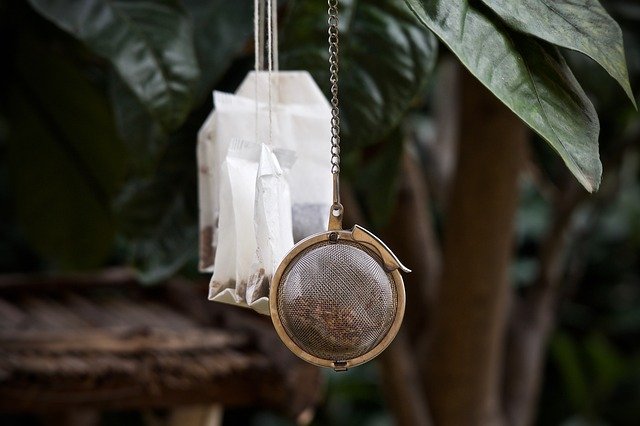
1. Cold Brew Overnight
How: Add 1.5 teaspoons loose leaf tea per 1 cup of room-temperature water, in a covered container (preferably glass or ceramic), refrigerating for approximately 12 hours (the longer, the better).
This method instantly creates a chilled tea that is ready to serve without ice. Simply strain into glasses or a pitcher and serve. If you prefer to use ice, double the tea to water ratio while steeping.
To serve hot, shortly before guests arrive, strain the brew into a sauce pot and gently warm on the stovetop, never bringing to a boil. You can either use teapot warmers on the table, or keep the tea warming on the stove and refill teapots as necessary throughout the party.
Pros: contains about half the caffeine of hot-steeped teas; the host can quickly refill teapots during teatime; avoids accidentally brewing a bitter tea; is ready to serve chilled for summer tea parties;
Cons: uses more tea leaves; takes up real estate in the fridge; can’t be made last-minute
2. Use an Electric Kettle
How: Fill a large electric kettle (approximately 7 cups) with fresh water and bring to proper temperature depending on your tea type. While the water heats (usually takes about one minute per cup to boil), prepare the tea leaves for steeping. Measure 1 teaspoon of tea leaves for every cup of water boiling, plus 1 extra teaspoon of tea leaves “for the pot” and put into a large bowl, pitcher or sauce pot, made of glass, ceramic or stainless steel. Pour the heated water over the tea leaves, cover and steep for the appropriate time based on your tea type, and strain into your teapot using a fine mesh hand strainer. Set tea leaves aside for a second steeping.
Pros: can be made minutes before the guests arrive; water quickly comes to temperature; requires no additional real estate in the fridge
Cons: adds another last-minute action item to the host’s duties; requires host’s attention so as not to oversteep; can be messy if you don’t have a steady pour when straining; may require the host step away to steep additional pots of tea during the teatime
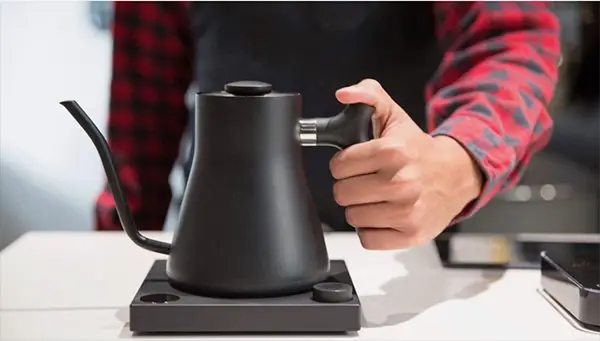
3. Use a Large Mesh Infuser and Sauce Pot
How: Add your loose leaf tea leaves to a stainless steel mesh infuser with approximately a 4-inch diameter (found in cooking supply stores). You want your infuser to be no more than half full of tea leaves to allow them to properly unfurl. Measure fresh water into a stainless steel sauce pot (again following the rule of 1 teaspoon tea leaves to 1 cup water, plus 1 teaspoon for the pot). Bring water to temperature on the stove, then immerse your infuser, using the hook at the end of its chain to secure it to the pot’s side, making removal simple. Cover the pot, brew the recommended time, then simply lift out the infuser, and set aside in a bowl for a second steeping. Once tea leaves are removed, you can keep the tea warming on the stove and refill teapots as necessary throughout the party.
Pros: practical method to steep a very large quantity of tea (more than 7 cups); the host can quickly refill teapots during teatime; requires no additional real estate in the fridge;
Cons: takes longer than an electric kettle to come to temperature; adds another day-of action item to the host’s duties
4. Make a Tea Concentrate
How: Anytime within a week of your afternoon tea, create your concentrate by steeping 3 teaspoons of tea leaves to every 1 cup of water, then refrigerate. Make one-third what you will want to serve at your tea party (example, to ultimately serve 12 cups of tea, you need 4 cups of tea concentrate). On the day of your tea party, blend 1 part tea concentrate with 2 parts boiled water (in other words, use double the amount of boiled water as tea concentrate). You can either mix the tea concentrate and water in a stovetop pot or in an urn with warmer, and refill teapots as needed, or you can mix them directly in a warmed teapot (swirl boiling water inside teapot before filling).
Pros: no need to brew on the day-of; practical method to steep a very large quantity of tea; takes less real estate in the fridge and uses less tea leaves than cold brew; the host can quickly refill teapots during teatime;
Cons: must measure carefully so as not to over-dilute;
Tea Service Recommendations
We suggest offering one caffeinated and one non-caffeinated brew at your afternoon tea, unless you know your guests’ particular tea preferences. For a small tea party of 2 to 5 guests, two 6-cup pots of tea should keep everyone’s teacup full. However, you may like to have three teas prepared, to pair one tea with each course of afternoon tea (savories, scones and sweets).
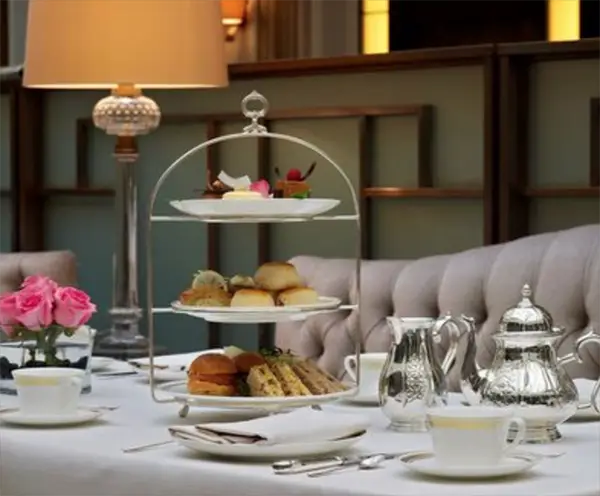
For larger parties, it’s time to do the math! Estimate about 3 cups (one per course) per guest. Dedicate one pot to each tea served, and consider using tea cozies or warmers to keep tea to temperature on the table.
Rather than having to race back and forth to the kitchen, a host can enjoy a more relaxing afternoon tea alongside their guests, by using one of the tea steeping methods above. And isn’t that the point of afternoon tea after all, to take one’s leisure?

Angela is the founder of Destination Tea, the U.S. Afternoon Tea Directory. Angela writes and speaks about afternoon tea history, etiquette and customs, in celebration and promotion of this beautiful tradition. Having reviewed more than 100 tearooms at home and abroad, Angela develops content for afternoon tea newcomers and aficionados alike, including pictorial tearoom reviews, resources for hosting a tea party at home, virtual tea party activity sets and afternoon tea basics for beginners.



